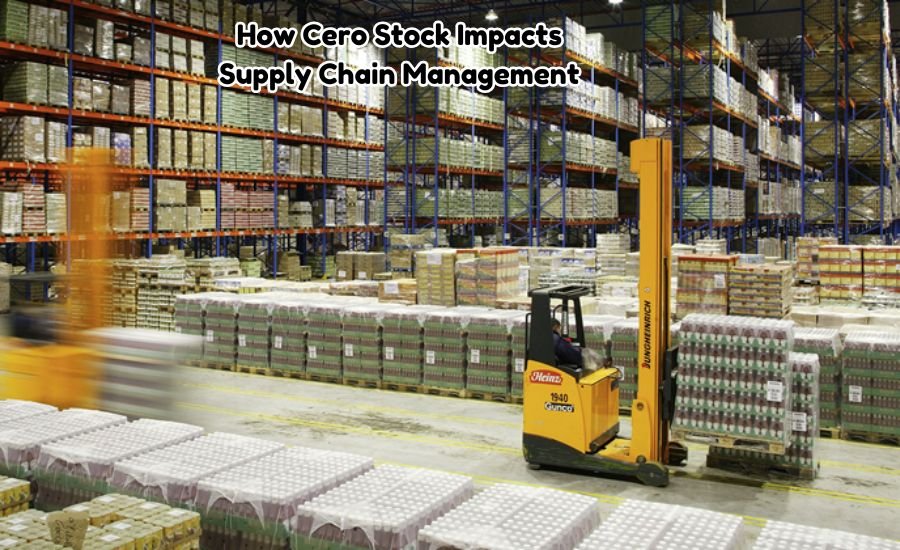Cero Stock has emerged as a prominent name in the world of finance and inventory management. It refers to a strategy or system designed to manage the flow of goods and services efficiently, ensuring that businesses remain in a healthy financial state. The main goal of Cero Stock is to minimize waste, optimize resources, and ensure that companies can operate smoothly without the need for large inventories.
In an increasingly fast-paced and competitive business environment, organizations are constantly looking for ways to streamline their operations and reduce costs. This is where Cero Stock comes into play. It enables businesses to operate efficiently by only keeping minimal stock levels, relying instead on just-in-time supply and precise forecasting.
The Concept of Cero Stock: What Does it Really Mean?
Cero Stock is a strategy where businesses aim to maintain minimal inventory levels, ideally as close to zero as possible. The goal is to avoid waste and ensure products are delivered to customers at the exact moment they are needed. This practice is commonly referred to as “Just-In-Time” inventory management.
The importance of Cero Stock lies in its potential to reduce costs associated with excess inventory, such as storage fees, spoilage, and obsolescence. By implementing a zero-stock policy, companies can maximize their cash flow and operational efficiency.
How Cero Stock Impacts Supply Chain Management

When businesses adopt the Cero Stock strategy, supply chain management becomes more critical. It requires careful coordination with suppliers to ensure the right products are delivered at the right time. This may involve setting up automated systems for monitoring demand and forecasting accurately.
A well-executed Cero Stock strategy can also improve relationships with suppliers, as it demands greater communication and reliability. Companies must work closely with their suppliers to ensure that the products are available on time, without having to maintain large quantities of stock in their own facilities.
Advantages of Cero Stock for Businesses
- Cost Reduction: The most notable advantage of Cero Stock is cost savings. With less inventory on hand, businesses can reduce storage and warehousing costs.
- Increased Cash Flow: With less capital tied up in inventory, companies can direct funds toward other growth areas.
- Lower Risk of Overstocking: By managing inventory more carefully, businesses reduce the chances of overstocking, which leads to unnecessary discounts or waste.
- Improved Focus on Core Operations: Instead of managing vast quantities of stock, companies can focus more on their core business functions.
The Challenges of Implementing Cero Stock
Despite its benefits, adopting a Cero Stock system can be challenging. Businesses need to ensure that they have accurate demand forecasting models, excellent supplier relationships, and effective supply chain operations. Some challenges include:
- Supply Chain Delays: Any delays in the supply chain can lead to stockouts, potentially disrupting business operations.
- Dependence on Suppliers: Companies become highly reliant on their suppliers to meet demand. A disruption in their operations can impact the business’s ability to deliver products to customers.
- Forecasting Accuracy: Without accurate data, businesses may miscalculate demand, leading to either stockouts or too much stock.
You May Also Like: Tech-theboringmagazine-ultimate-hub-for-tech-enthusiasts
Examples of Cero Stock in Different Industries
Retail Industry
In the retail industry, Cero Stock can help minimize inventory costs and reduce the risk of overstocking, especially during seasonal fluctuations. Large retailers often use Cero Stock strategies to manage their supply chain in real-time, ensuring they meet customer demand without carrying excessive inventory.
Manufacturing Industry
For manufacturers, Cero Stock plays a key role in optimizing production schedules. By maintaining low stock levels, manufacturers can ensure that raw materials are only ordered when needed, thus reducing waste and enhancing efficiency.
Tech Industry
In the tech industry, Cero Stock is crucial for managing high-demand, fast-moving products. Companies in this field often employ zero-stock strategies to avoid having outdated or obsolete inventory.
How to Achieve Cero Stock in Your Business

Achieving Cero Stock requires meticulous planning and execution. Here’s a step-by-step approach:
- Demand Forecasting: Use data analytics and customer behavior insights to predict demand as accurately as possible.
- Supplier Relationships: Build strong relationships with reliable suppliers who can deliver products on short notice.
- Automation: Invest in automated inventory management systems that can track stock levels in real time.
- Continuous Monitoring: Regularly evaluate your supply chain and inventory management processes to identify areas of improvement.
The Role of Technology in Supporting Cero Stock
Technology plays a crucial role in managing Cero Stock effectively. Advanced software tools help businesses track inventory levels, forecast demand, and communicate with suppliers in real-time. Implementing a reliable Enterprise Resource Planning (ERP) system can significantly reduce human error and ensure that the Cero Stock strategy is executed efficiently.
Conclusion
As businesses continue to prioritize efficiency and cost reduction, the adoption of Cero Stock strategies will only increase. In today’s fast-evolving market, staying agile is crucial for maintaining a competitive edge. With technological advancements, more companies are turning to automated systems and data-driven insights to optimize inventory management, making the concept of zero stock more accessible and practical than ever before.
However, businesses must still be cautious, as relying too heavily on Cero Stock can create vulnerabilities, especially in the event of supply chain disruptions or inaccurate forecasting.Nevertheless, Cero Stock presents a promising future for businesses aiming to reduce operational costs while staying responsive to market demand. The key to successfully implementing this strategy lies in balancing minimal stock levels with a reliable and responsive supply chain.
Get The Latest Updates On: Vtnr-stock-ultimate-guide-for-smart-investors-2024
FAQs
What is the concept of Cero stock?
Zero stock is a strategy where businesses aim to maintain minimal inventory, reducing waste and optimizing resources while ensuring products are available when needed.
How does zero stock benefit businesses?
It helps businesses reduce storage costs, increase cash flow, and prevent overstocking by aligning inventory levels closely with customer demand.
Is zero stock the same as Just-In-Time (JIT) inventory?
Yes, zero stock is often used interchangeably with Just-In-Time inventory, as both aim to minimize stock while ensuring timely deliveries.
What industries use zero stock the most?
Zero stock is commonly used in retail, manufacturing, and technology industries where efficient inventory management is crucial to operations.
Can zero stock reduce business risks?
Yes, by preventing overstocking, businesses reduce the risk of excess inventory and its associated costs like spoilage, waste, or obsolescence.
What challenges are associated with zero stock?
The main challenges include potential stockouts, reliance on suppliers, and the need for accurate demand forecasting.
How do businesses implement zero stock effectively?
By using advanced forecasting tools, establishing strong supplier relationships, and adopting automated inventory management systems.
Does zero stock save money?
Yes, it reduces overhead costs related to warehousing, storage, and maintaining excess inventory.
Can zero stock be used by small businesses?
Absolutely. Even small businesses can benefit from zero stock by minimizing costs and streamlining inventory management.
Is zero stock suitable for all types of businesses?
While it’s highly effective for many, zero stock may not be ideal for businesses with highly unpredictable demand or those requiring large amounts of stock for production.
